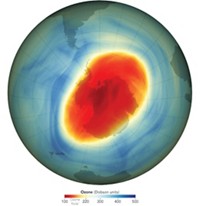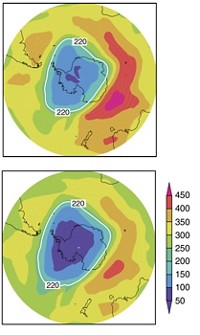Advertisement
Grab your lab coat. Let's get started
Welcome!
Welcome!
Create an account below to get 6 C&EN articles per month, receive newsletters and more - all free.
It seems this is your first time logging in online. Please enter the following information to continue.
As an ACS member you automatically get access to this site. All we need is few more details to create your reading experience.
Not you? Sign in with a different account.
Not you? Sign in with a different account.
ERROR 1
ERROR 1
ERROR 2
ERROR 2
ERROR 2
ERROR 2
ERROR 2
Password and Confirm password must match.
If you have an ACS member number, please enter it here so we can link this account to your membership. (optional)
ERROR 2
ACS values your privacy. By submitting your information, you are gaining access to C&EN and subscribing to our weekly newsletter. We use the information you provide to make your reading experience better, and we will never sell your data to third party members.
Environment
Nitrous Oxide Threat To Ozone
As halocarbons decline, N2O emerges as a chemical of concern
by Jyllian N. Kemsley
August 31, 2009
| A version of this story appeared in
Volume 87, Issue 35

Nitrous oxide emissions are now the single most important threat to the ozone layer, which protects Earth and its inhabitants from ultraviolet radiation, NOAA scientists report (Science, DOI: 10.1126/science.1176985).
The chemistry of atmospheric N2O is well-established: It is stable in the lowest level of the atmosphere, the troposphere, where it has a lifetime of about 100 years and acts like a greenhouse gas. When N2O migrates up to the stratosphere, it is converted to NO, which reacts with O3 to produce NO2 and O2. NO2 in turn reacts with O to re-form NO.
The new work uses this N2O chemistry to calculate nitrous oxide’s “ozone-depletion potential,” which compares the O3 destroyed per unit mass of N2O and per unit mass of CFCl3.
The result shows that the ozone-depletion potential of N2O is comparable with that of several hydrochlorofluorocarbons, the industrial use of which is set to be phased out by 2030 in accordance with an international treaty, the Montreal Protocol on Substances That Deplete the Ozone Layer.
When the NOAA group weighted current atmospheric emissions by their respective ozone-depletion potentials, N2O emerged as the most critical ozone-depleting substance.
“In the ozone-depletion story of the past few decades, the focus has been solely on chlorine and bromine compounds,” says Martyn Chipperfield, professor of atmospheric chemistry at the University of Leeds, in England. “This paper neatly demonstrates that we are now at a point where N2O/NOx is the biggest threat to the ozone layer.” Ironically, atmospheric chlorinated compounds reduce the ozone-depletion effects of N2O, which should therefore worsen as chlorine levels drop.
Nitrous oxide in the atmosphere comes from both natural and anthropogenic sources, says A. R. Ravishankara, who led the NOAA group. About one-third of atmospheric N2O comes from human activities, in particular agriculture. Scientists estimate that anthropogenic sources of N2O are increasing at a rate of about 1% per year, Ravishankara says.




Join the conversation
Contact the reporter
Submit a Letter to the Editor for publication
Engage with us on Twitter